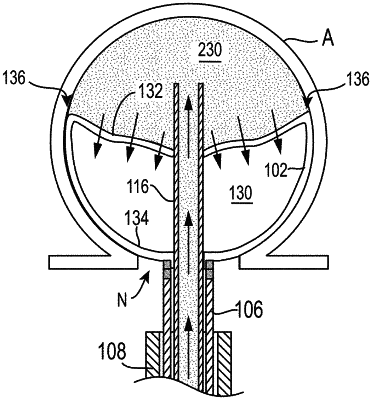| CPC B23P 19/047 (2013.01) [A61B 17/1214 (2013.01); A61B 17/12031 (2013.01); A61B 17/12113 (2013.01); A61B 17/12145 (2013.01); A61B 17/12172 (2013.01); A61B 17/12186 (2013.01); A61B 17/12168 (2013.01); A61B 2017/00526 (2013.01); A61B 2017/00557 (2013.01); A61B 2017/00862 (2013.01); A61B 2017/00929 (2013.01); A61B 2017/12054 (2013.01); A61B 2017/12063 (2013.01); A61B 2090/376 (2016.02); A61B 2090/3966 (2016.02)] | 19 Claims |

|
1. A method for treating an aneurysm, the method comprising:
positioning a distal end of an elongated shaft in an aneurysm cavity;
releasing an occlusive member from the elongated shaft while the distal end of the elongated shaft is positioned within the aneurysm cavity such that the occlusive
member self-expands to assume a first expanded state in which the occlusive member forms a first shape, wherein, in the first expanded state, the occlusive member encloses an interior region having a first interior volume; and
delivering an embolic element between the occlusive member and the aneurysm wall to transform the occlusive member into a second expanded state in which the occlusive member encloses a second interior volume less than the first interior volume, wherein the occlusive member forms a second shape in the second expanded state that is different than the first shape in the first expanded state; and
wherein transforming the occlusive member into the second expanded shape includes injecting the embolic element to invert a portion of a sidewall of the occlusive member such that the portion is convex towards the aneurysm wall in the first expanded state and concave towards the aneurysm wall in the second expanded state.
|